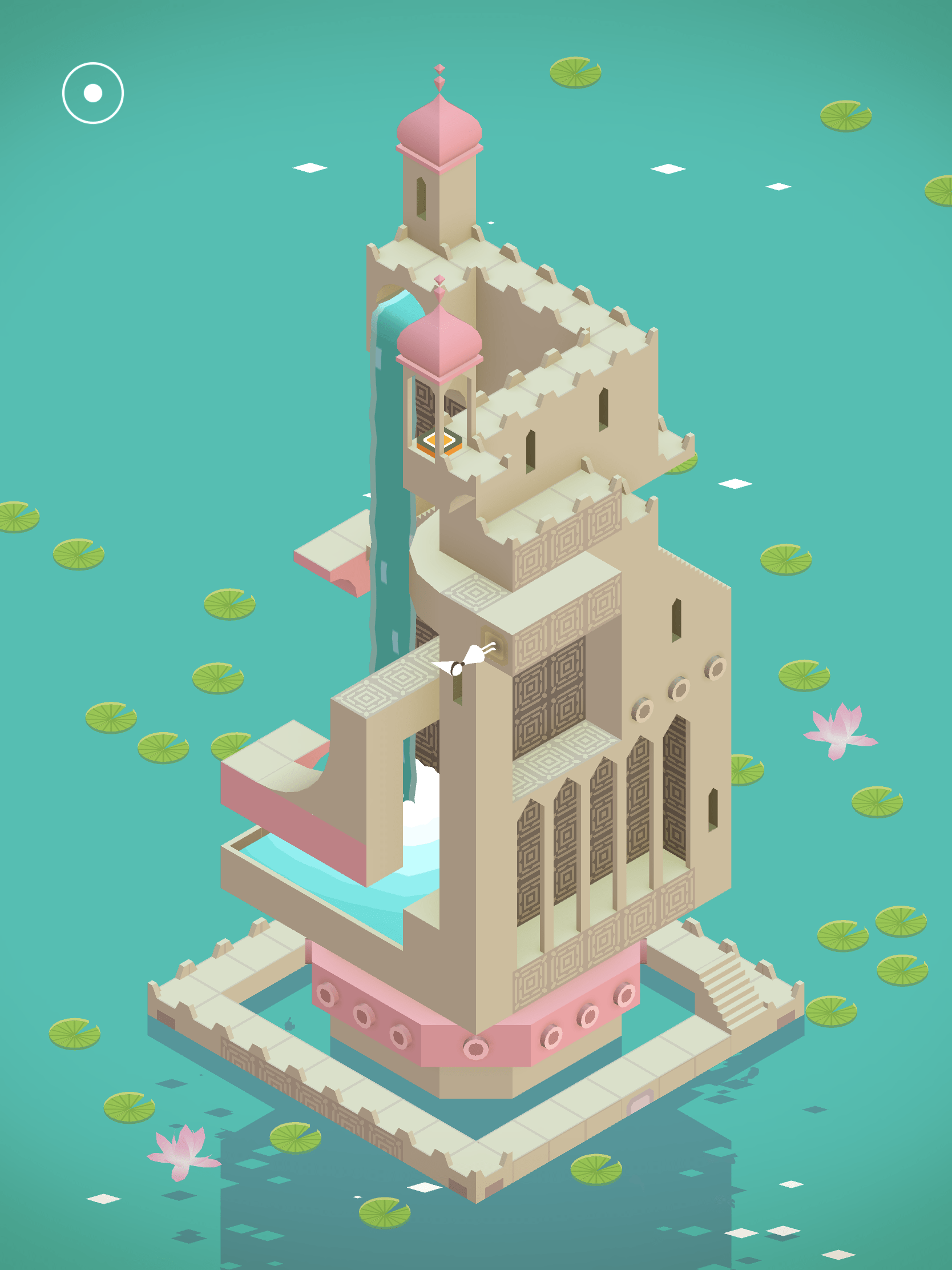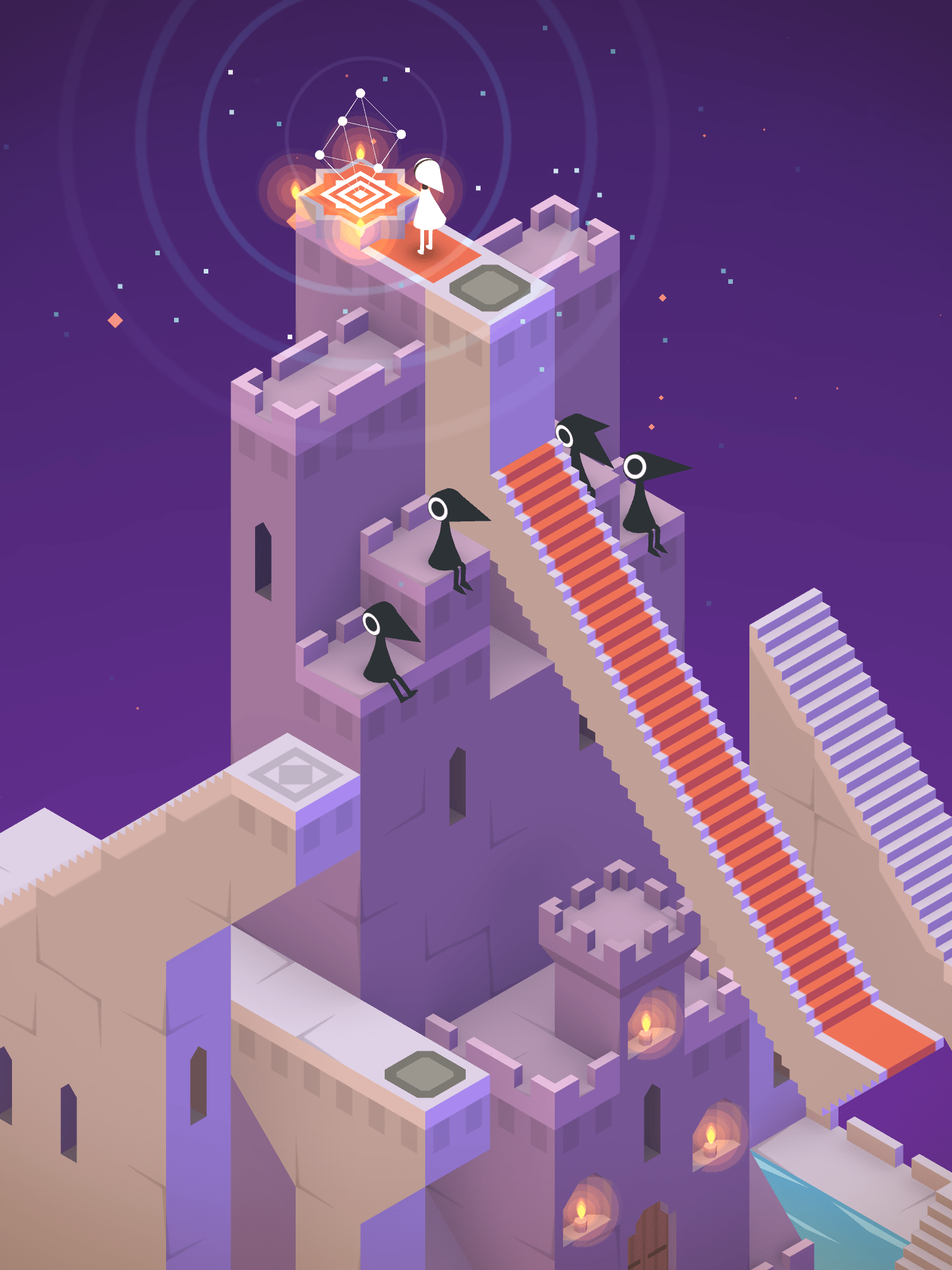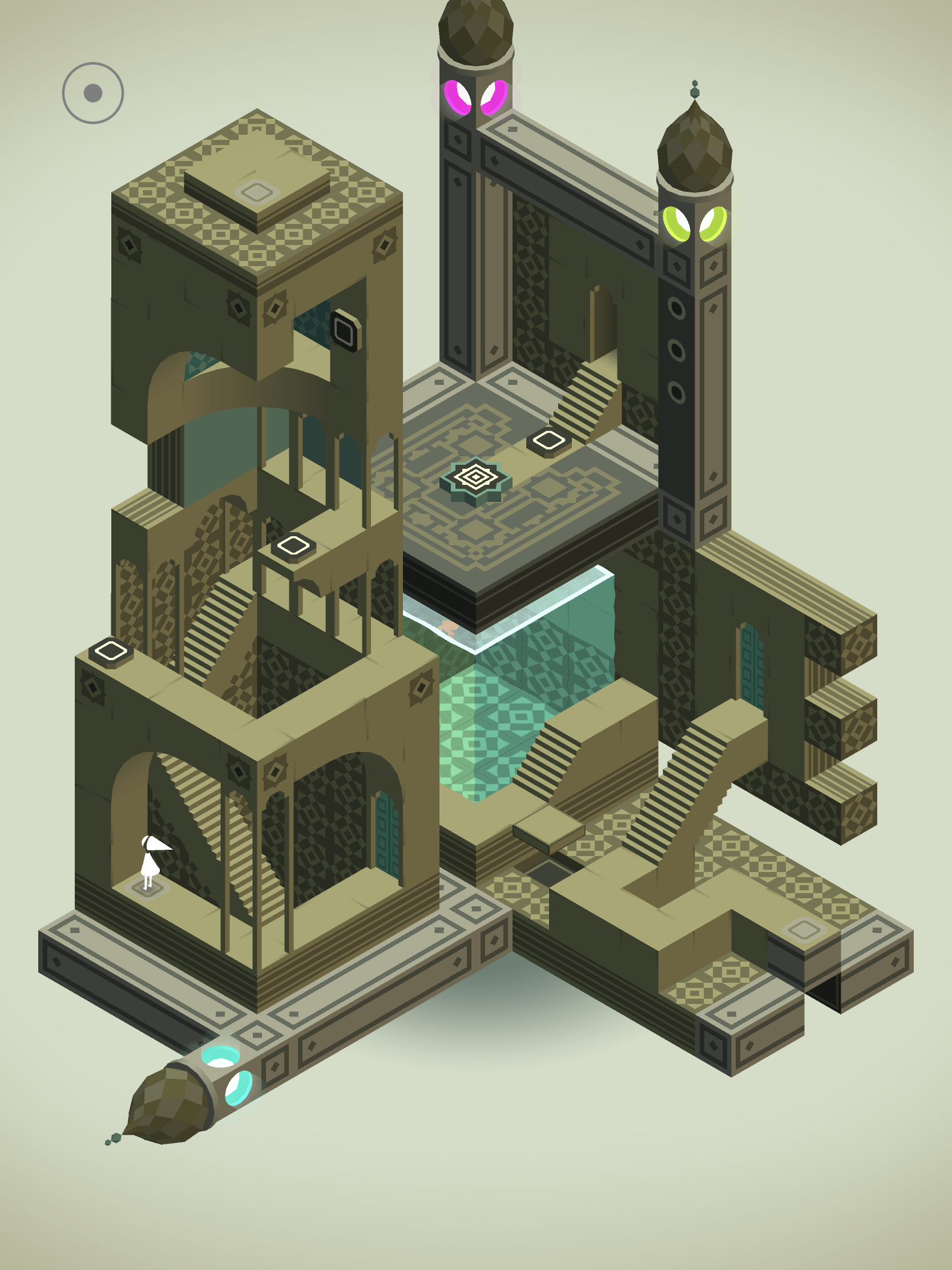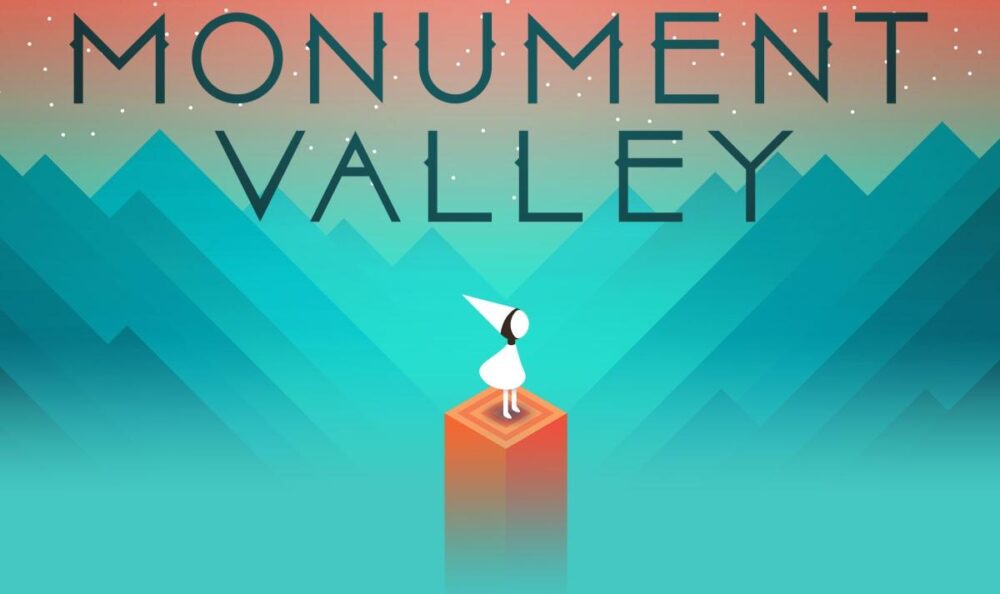Monument Valley was released in 2014 by UsTwo games. It is available to play on Android, iOS, and Windows devices. The game is for players ages four and up, and its target audience is for people looking for a relaxing, satisfying puzzle game. For this critical play, I played through the entire game in one sitting on my iPad. The mechanics of Monument Valley’s puzzles prioritize the player’s exploration of both the space and the narrative of the game.

The puzzle’s mechanics take advantage of optical illusions related to shapes and perspectives. Ida, the main character, has a singular goal of navigating a geometric structure called a “monument” and reaching an altar of sorts. To do so, players must turn various cranks, rotate wheels, or slide platforms which change the shape of the monument. In doing so, new paths are revealed via a perspective shift. There is also the mechanic of “pesky crow people,” who block Ida’s path and must be avoided through clever maneuvering of either Ida herself or of the monument. These puzzles have players thoroughly exploring the landscape. Rotating the monument might reveal a hidden back area which now must be traversed. New mechanics where players discover that Ida can defy gravity and walk on walls gives new surfaces to cover. Every piece of the monument is significant to the puzzle, and players realize this as they solve the puzzle.

The puzzle itself also lends itself to creating an emergent narrative, which invites players to explore the story of Ida. The geometric nature of the puzzle itself connects to the geometry Ida takes out at the end of each level and to the “sacred geometry” that was stolen by a “thieving princess.” The crow people who are obstacles in the puzzle are shaped like Ida and walk around the monument just like her. The structure of the monuments also point to a story, where some puzzles have Ida ascending up to a throne-like structure while others have Ida descending down to a crypt.

The difficulty curve of the puzzle puts players in a flow state where they feel engaged and willing to explore the monuments and the narrative. Each level can be solved in less than five minutes, but completing these puzzles gives immense satisfaction through the visual aspect of perfectly aligned components and the sound of a melodic tune. New mechanics are thrown in at regular intervals, such as introducing the crow people, walking upside down, and the totem friend, to keep the puzzle interesting and challenging. In my personal playthrough, the only puzzle that had me stumped for a while was the last one, as it required me to plan my path in advance. Previous levels were forgiving enough because there weren’t too many diverging paths you could take, so you did not have to constantly plan your next action. It makes sense that the last puzzle would be more challenging when the past levels have been easy but satisfying to complete. I personally might not have been able to play through the whole game in one session had the all the puzzles been as challenging as the last one.
Ultimately, the mechanics of the puzzle evoke feelings of challenge and exploration. Players must change their perspective using optical illusions to navigate the puzzle. Along the way, they uncover both hidden parts of the monument and Ida’s story.



